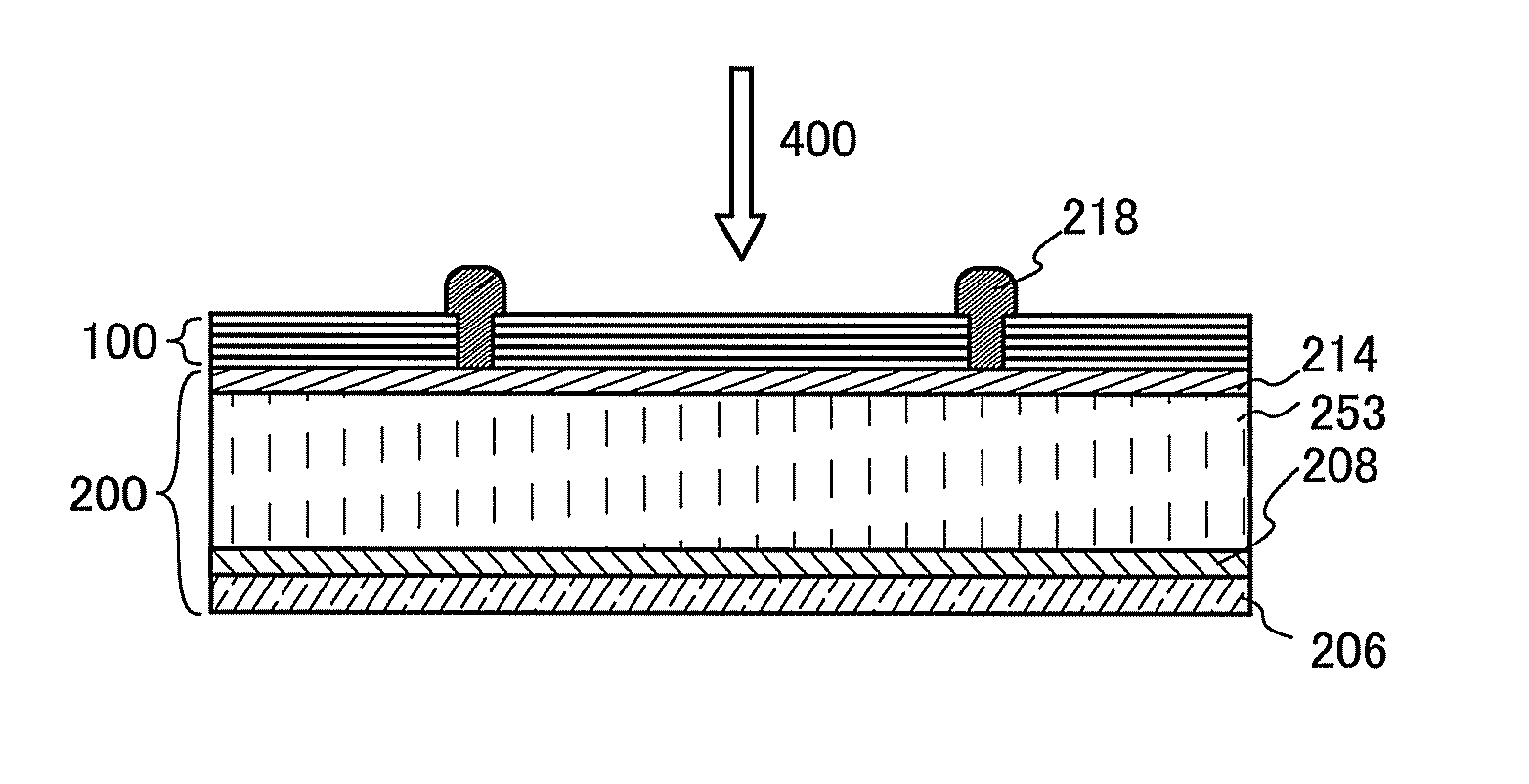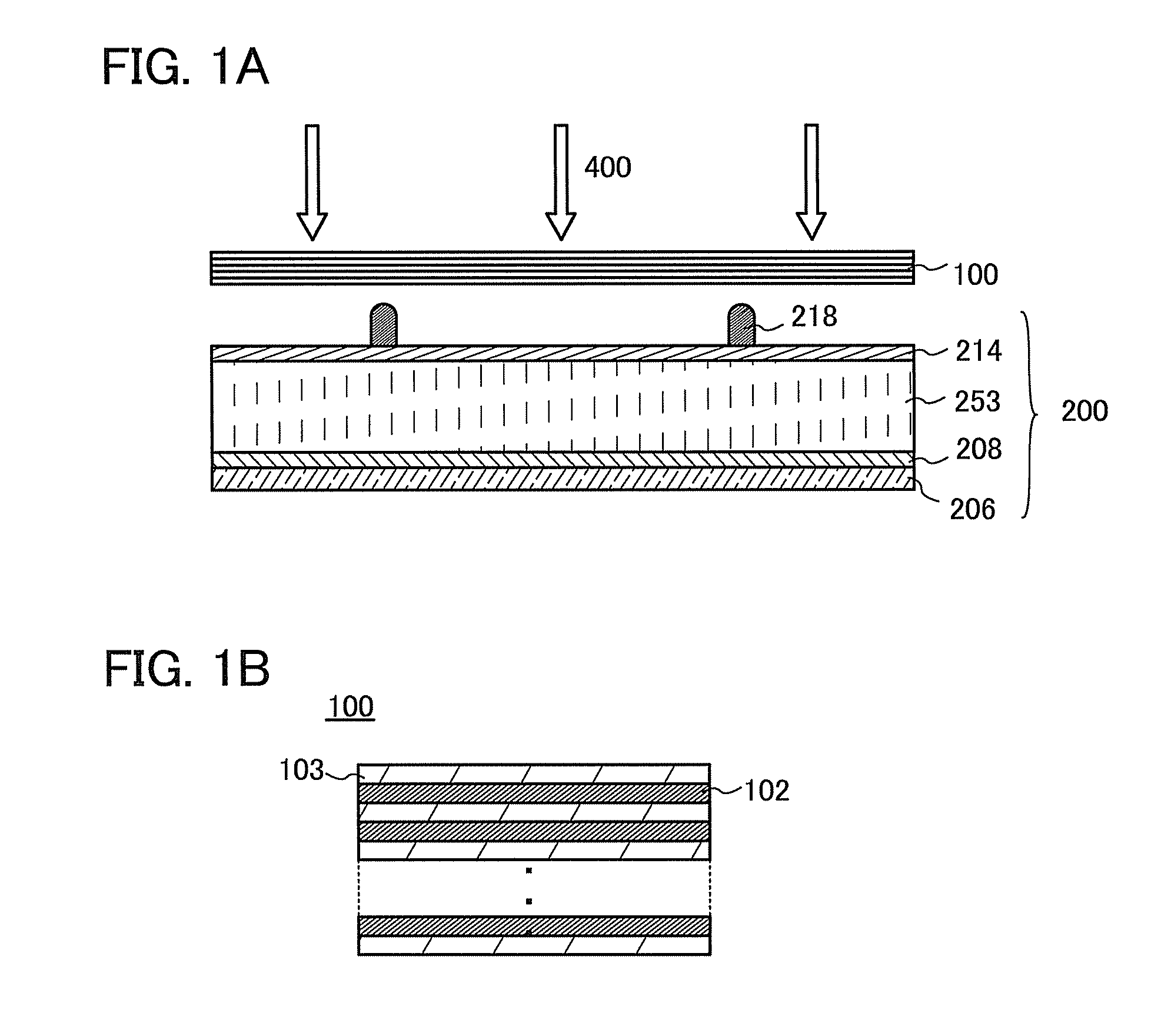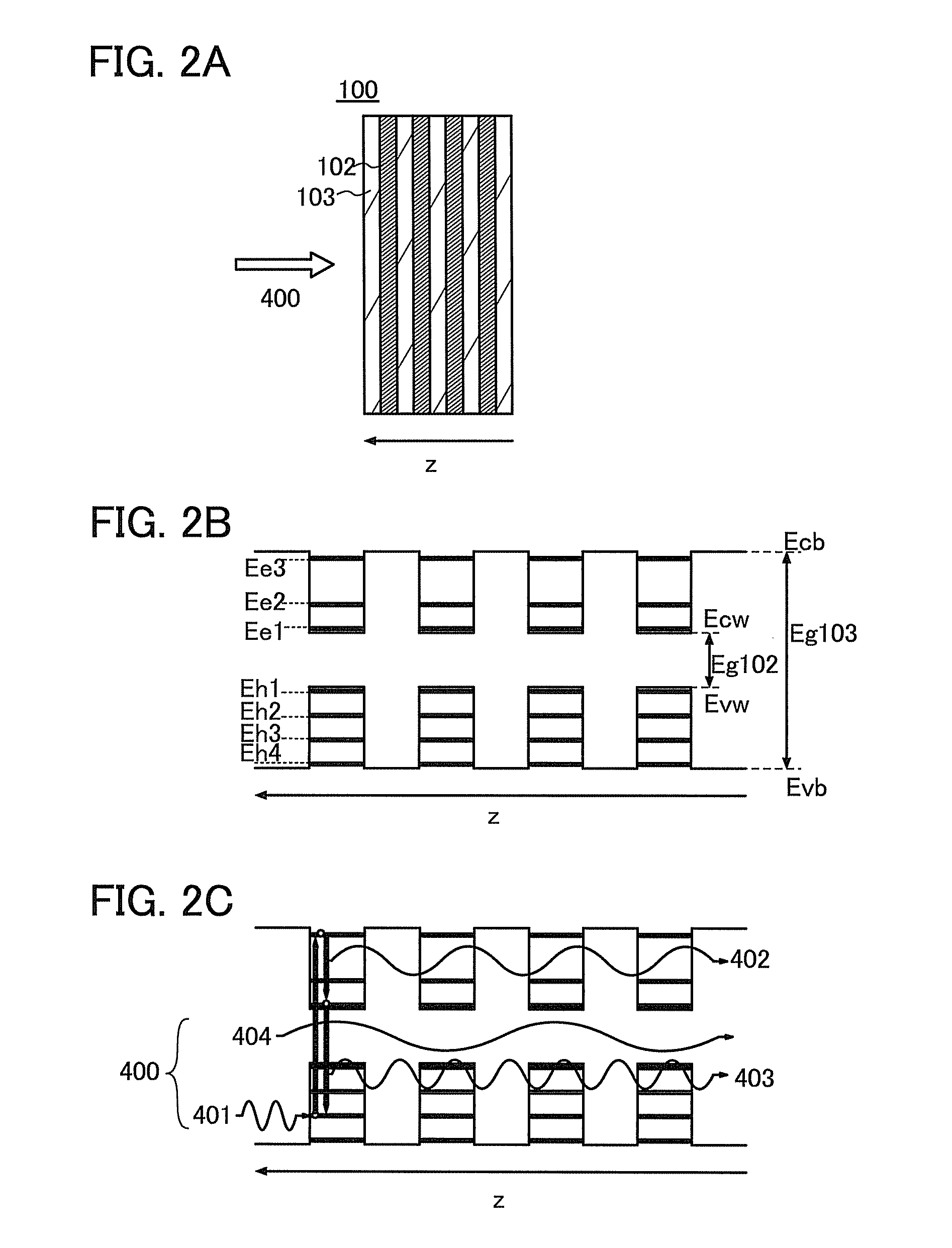Photoelectric conversion device and energy conversion layer for photoelectric conversion device
a conversion device and photoelectric technology, applied in semiconductor devices, nanotechnology, nanotechnology, etc., to achieve the effects of reducing the cost of the conversion device, and reducing the weight of the photoelectric conversion devi
- Summary
- Abstract
- Description
- Claims
- Application Information
AI Technical Summary
Benefits of technology
Problems solved by technology
Method used
Image
Examples
embodiment 1
[0049]In this embodiment, an example of a structure of a photoelectric conversion device and an example of a structure of an energy conversion layer according to an embodiment of the disclosed inversion will be described with reference to FIGS. 1A and 1B and FIGS. 2A to 2C.
[0050]FIG. 1A is a cross-sectional schematic view illustrating an example of a photoelectric conversion device. The photoelectric conversion device includes a photoelectric conversion element 200 and an energy conversion layer 100. The energy conversion layer 100 is provided on the light-receiving side of the photoelectric conversion element 200. Incident light 400 enters a photoelectric conversion layer 253 included in the photoelectric conversion element 200 through the energy conversion layer 100.
[0051]The photoelectric conversion element 200 includes a first electrode 206, the photoelectric conversion layer 253, and a second electrode 218. In addition, the photoelectric conversion element 200 includes a first ...
embodiment 2
[0075]In this embodiment, an example of a structure of an energy conversion layer for a photoelectric conversion device according to an embodiment of the disclosed inversion will be described with reference to FIG. 3.
[0076]FIG. 3 is a cross-sectional schematic view illustrating, by enlarging, an example of an energy conversion layer 100 used in a photoelectric conversion device. The energy conversion layer 100 includes a first unit 104 and a second unit 105. The first unit 104 includes a plurality of first layers 102a with a first thickness and a plurality of second layers 103a with a second thickness, and the first layer 102a and the second layer 103a are alternately stacked. The second unit 105 includes a plurality of third layers 102b with a third thickness and a plurality of fourth layers 103b with a fourth thickness, and the third layer 102b and the fourth layer 103b are alternately stacked. Each of the plurality of first layers 102a is sandwiched between the second layers 103a...
embodiment 3
[0085]In this embodiment, an example of a structure of an energy conversion layer for a photoelectric conversion device according to an embodiment of the disclosed inversion will be described with reference to FIG. 4.
[0086]FIG. 4 is a perspective view illustrating an example of an energy conversion layer 100.
[0087]The energy conversion layer 100 includes a plurality of first layers 112 each having a longitudinal direction (a y direction in FIG. 4) and a lateral direction (a x direction in FIG. 4) and a second layer 113. Each of the plurality of first layers 112 is surrounded by the second layer 113 in a cross section in a lateral direction. The plurality of first layers 112 each having a longitudinal direction and a lateral direction are arranged at predetermined intervals in a thickness direction (also referred to as a vertical direction or a z direction in FIG. 4). The plurality of first layers 112 each having a longitudinal direction and a lateral direction are arranged at predet...
PUM
 Login to View More
Login to View More Abstract
Description
Claims
Application Information
 Login to View More
Login to View More - R&D
- Intellectual Property
- Life Sciences
- Materials
- Tech Scout
- Unparalleled Data Quality
- Higher Quality Content
- 60% Fewer Hallucinations
Browse by: Latest US Patents, China's latest patents, Technical Efficacy Thesaurus, Application Domain, Technology Topic, Popular Technical Reports.
© 2025 PatSnap. All rights reserved.Legal|Privacy policy|Modern Slavery Act Transparency Statement|Sitemap|About US| Contact US: help@patsnap.com



